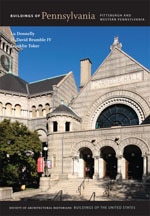
This Lustron house is a rare artifact of the post–World War II era. The steel-paneled houses were intended to ease the housing shortage after the war, and were promoted as economical and of low maintenance. Built of two × two–foot squares of porcelain enamelclad steel, Lustron houses typically were assembled in five working days. Influenced by protoypes shown at Chicago's Century of Progress Exposition in 1933, Chicago architect Morris H. Beckman designed a model where the entire house, including the roof, exterior and interior walls, kitchen cupboards, bookcases, and built-in vanities, is steel. The company produced 2,492 houses in the Midwest and Northeast between 1948 and 1950, when they went out of business. There are only a handful of Lustron houses remaining in western Pennsylvania.




















